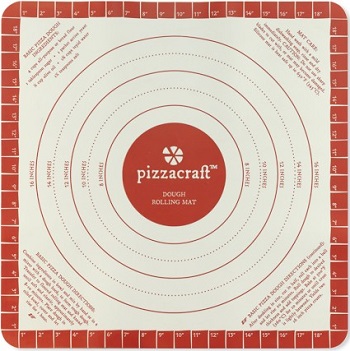
Anyone who regularly bakes fruit cobblers or pies has probably experienced some spillover of thick, bubbling fruit juices as their dish bakes. These juices taste delicious in a pie – but they’re not so delicious when they’re on the bottom of your oven, nor are they easy to clean up. There are many solutions to try to keep the in check, including putting your pie dish on a baking sheet or a large piece of aluminum foil, but there are actually a whole group of tools that are designed just for this one purpose: pie drip catchers. Also called oven guards, these tools are slick, nonstick baking sheets that are shaped like flat donuts and sit right under a standard pie plate to catch any and all drips that might bubble over the crust. The donut design also allows the maximum heat of the oven to reach the bottom of the pie pan to help ensure you get a crisper crust.
The tool does a simple job, but Cook’s Illustrated wanted to see if all pie drip catchers were created equal and set out to put them through their paces for a recent issue (May/June 2013) in the test kitchen. They tested four models and found that while they were all easier to clean than the interior of an oven,some worked better than the rest. The top-rated pick was the Chicago Metallic No-Drip Pie Shield, which boasted a silicone ring in the center to help anchor a pie plate and keep it from accidentally sliding around. The rest of the shield was nonstick and easy to clean, but that extra security is what got it a “recommended” vote from the test kitchen.
Other drip catchers included the Fox Run 12-Inch Oven Guard/Drip Catcher and the Norpro Nonstick Oven Guard, both of which proved to be a slippery surface for pie plates to rest on. The Nifty Pie Baking Rack finished at the bottom of the rankings even though it was more secure than the Fox Run and Norpro models because its two-part design wasn’t completely nonstick and took some good elbow grease to clean – and that is what you are trying to avoid by using drip catcher in the first place.





What do you think?